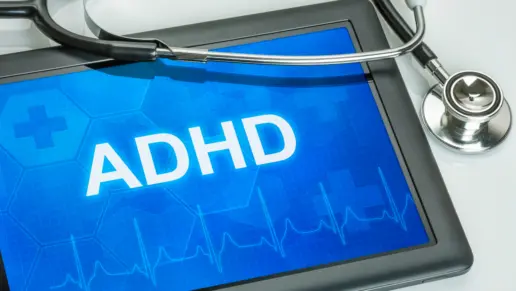Persons in treatment for substance use disorder report often that they use alcohol and other substances to alleviate emotional distress or elevate their emotional state to change their perception of reality. Does unresolved grief lead to addiction?
How Unresolved Grief Can Lead to Addiction and Substance Use Disorder
Bereavement caused by the loss of a loved one or another stressful circumstance can motivate a person who has not learned to grieve in a healthy way to use alcohol or another substance to cope with painful feelings.
But the loss of a loved one is not the only form of bereavement that links to substance abuse. In fact, the cycle may be circular. Persons who are bereaved may turn to substances to numb their feelings.
Conversely, those who have experienced addiction may also experience a form of “bereavement,” a sense of loss associated with abstinence from drugs or alcohol.
Grief is largely induced by the loss of an attachment. When a person gives up their attachment to the substances they have grown accustomed to using as a coping skill or loses the lifestyle they had in addiction then grief can occur. Any loss of an attachment can create grief and this may complicate the recovery process.
What are the Stages of Grief and Loss?
The five stages of grief were introduced in 1969 by psychiatrist Elisabeth Kubler-Ross who wrote a book called On Grief and Grieving. Dr. Kubler-Ross cited the five stage model of grief as the emotional process a person experiences when they have lost a loved one.
Several additions have been made since her model was introduced including a significant one by the co-author David Kessler. In his book Finding Meaning: The Sixth Stage of Grief, Kessler moves the five stage model into a six stage model to create a path toward recovery from grief and loss.
Denial
This initial stage of grief occurs at the time when a person first learns of the loss. Whether it is hearing a loved one has died unexpectedly, a person receiving a terminal diagnosis, or when a person loses a relationship, home, or career that was meaningful to them, the unexpectedness of the news can cause a person to disbelieve the reality of the situation.
These overwhelming feelings are often described as a state of shock and numbness that lead to a dissociative separation between thinking and feeling, confusing a person’s ability to process information.
Anger
The second stage is the response of outrage at not being able to control the situation to a preferred outcome. Anger is the cover up to the enormous pain being felt, because anger is easier for people to express than emotional pain.
Blaming others is often a part of the anger portion of the grief cycle. Anger can also stem from feeling helpless or guilty about not having any power over changing the circumstances.
Bargaining
The third stage of grief is defined as seeking a way to control an uncontrollable situation through either spiritual negotiation or pressuring the medical community to do something different.
People often describe bargaining as wrestling with “what if” or “if only”. It is an intense emotional attempt to restore life to the “before the loss” status. Bargaining may look like a truce or a deal made with anyone or anything that is believed to have the power over the situation a person is powerless over.
The first three stages of grief are considered dissociative means of coping with overwhelming emotions by seeking temporary relief or avoiding the reality of the situation.
Sometimes people will turn to substance use to avoid the intensity of these feelings. Some substances may induce dissociation. It is important to remember when experiencing grief that each phase will reoccur through a cyclical process and avoidance through substance use only makes the next round of emotional intensity tougher to persevere through.
Depression
This fourth stage begins returning to a realistic understanding of the loss and coming to accept that there is nothing that can be done to return the situation back to the way it was before the loss. Depression is a normal part of grieving whether it is the result of losing a loved one or an attachment to an addictive lifestyle.
Depression relating to grief and loss comes in waves of sadness. The emotional pain is often associated with memories and a fear of what life will look like without the person or loss experienced. The intensity of feelings of depression, as well as the other stages of grief, will dissipate as the cycle repeats.
Acceptance
This fifth stage of grief is accepting that the survivor of the loss must find a way to move forward in life without the person or loss experienced. Acceptance is a resolution to proceed in spite of the sorrow. Memories no longer cause pain, but become a comfort and a way of holding on to the person or loss, without the anguish of trying to change the situation.
Sometimes people feel guilty for coming to a place of acceptance, and this can initiate the cycle of grief to start over. Survivors’ guilt is a part of the acceptance process and is necessary to reconcile with the acceptance of moving forward, lest a person be stuck in the cycle of grief longer than what is a healthy grieving process.
Finding Meaning
This sixth stage added by Kessler creates a process for moving forward after loss. Meaning is found in honoring the loss of a loved one by engaging in a purposeful work. Kessler emphasises how love is the motivating factor. Meaning can be found in many ways and experiencing love for others is one way to understand that life continues beyond the loss.
The most important thing to remember about the grief and loss cycle is that it is not a one and done experience. Grief takes time. A person will travel through this process over and over again until the intensity dissipates and the feelings of loss become more tolerable. Life moves forward as meaning begins to reappear.
Sometimes people get stuck in certain stages of the grief cycle. A person can spend years being angry or depressed. Suicide and substance abuse can result in an effort to avoid these feelings because of the discomfort of the intensity.
A common saying in grief and loss counseling is “the only way out is through” as the true healing of grief and loss occurs as one passes through the cycle over and over again until the intensity dissipates.
Depending on how long a person had a relationship, a job, a pet, or any other loss, the grief process can take a long time.The only healthy way to heal from grief is to experience the feelings as they come, until the intensity becomes tolerable.
The stages can be debilitating initially, and professional assistance may be necessary in order to move through the grief cycle in a healthy way.
Coping with Loss, Grief and Addiction
Therapeutic interventions often focus on the development of tolerance to emotions and stages of emotional intelligence. The grief process is an emotional cycle and grieving individuals may sometimes use substances in an attempt at avoiding uncomfortable feelings.
When unresolved grief accompanies addiction disorders, treatment processes must address both the substance use disorder and the trauma associated with grief.
A treatment team will develop an individual plan tailored to address the process of not only dealing with withdrawal symptoms but also learning new coping skills to deal with uncomfortable emotions in a healthy way.
There are multiple publications that can aid in developing healthy coping skills for depression and grief, including veterans-focused resources from the United States Department of Veterans Affairs.
There are also support groups available through local organizations, such as your local chapter of the National Alliance on Mental Illness (NAMI). Online resources can assist in coping with grief and loss as well as provide support for recovery from substance use disorder.
The online or local alcoholics anonymous (AA) or narcotics anonymous (NA) meetings can be found at https://aana.live/. The development of new skills along with creating a support system will provide the necessary tools for moving through grief and finding recovery from substance use.
Impact of Substance Use on Mortality
Overdoses from narcotic substance use have become a central focus of addiction prevention and treatment with over 100,000 deaths occurring each year. Alcohol related deaths account for over 50,000 deaths per year.
Alcohol use disorder is the second most common mental health disorder and contributes to 1 in in every 4 suicides. Depression is also cited as the cause of two-thirds of all reported suicides.
Substance abuse is reported as the greatest contributor to domestic violence calls by law enforcement. The U.S. Department of Justice reports 92 percent of domestic violence offenders use substances and/or alcohol.
Other physical diseases associated with substance use are HIV, hepatitis, various types of cancer, heart disease, kidney disease, liver disease and respiratory failure. Persons who have a drug or alcohol use disorder are also at a higher risk of dying prematurely by 24 years than those who do not have an addiction.
How Do I Know if Someone has an Addiction?
When a person’s behavior changes abruptly and it is noticed that they are being secretive then they may have begun using substances. Persons who are avoiding conversations regarding where they have been or what they are doing or are being dishonest may have developed a substance use disorder.
Changes in hygiene and or sleeping habits may also be an indication of substance use. Missing money or prescriptions may indicate a substance use problem. When it is observed that a person’s behavior has changed in an unusual way then it can be a symptom of a substance use problem.
These signs are not definitive proof of addiction Other factors, like stress or health issues, can cause similar changes.
Where Can I Find Information about Substance Abuse Treatment?
There are many resources for finding treatment online. Using any of these sources can direct a person to local, national or international treatment options.
- SAMHSA National Helpline: The Substance Abuse and Mental Health Services Administration (SAMHSA) help line can connect you with vital resources to support your recovery.
- Rehab.com: Our online rehab search tool helps you locate addiction treatment facilities near you. You can search by city and state and then filter the results by level of care, payment options and other factors.
- Doctor: If you or someone you know needs help for a substance use disorder then a trusted physician can provide treatment or help direct you to resources in your area.
- Local Support Groups: Groups like Alcoholics Anonymous (AA) or Narcotics Anonymous (NA) can help you find support and solidarity as you navigate your recovery journey.
What Are the Treatment Options for Drug Addiction?
Treatment for substance use disorder is provided through an individual master treatment plan created cooperatively between a client and their treatment provider. It is designed to specifically address the needs of the client.
Research indicates that based on the severity of the addiction a step down program will provide the opportunity to stay in treatment longer and provide greater stability in recovery.
Treatment options include withdrawal and stabilization (detox), medication assisted treatment (MAT), inpatient residential treatment, partial hospitalization outpatient, intensive outpatient and outpatient treatment. Many individuals use more than one of these options over the course of their treatment.
Treatment can occur in group, individual or peer support educational sessions. A licensed treatment provider will assess the level of treatment needed and work with a client to design the best program.
A thorough aftercare plan can help clients stay supported and connected to community based supports after their formal treatment program ends.
As you explore treatment and support services, you can learn more about rehab options to understand what levels of care are available during recovery.
Nearby Addiction Centers That Treat Dual Diagnosis
Finding facilities near you…





